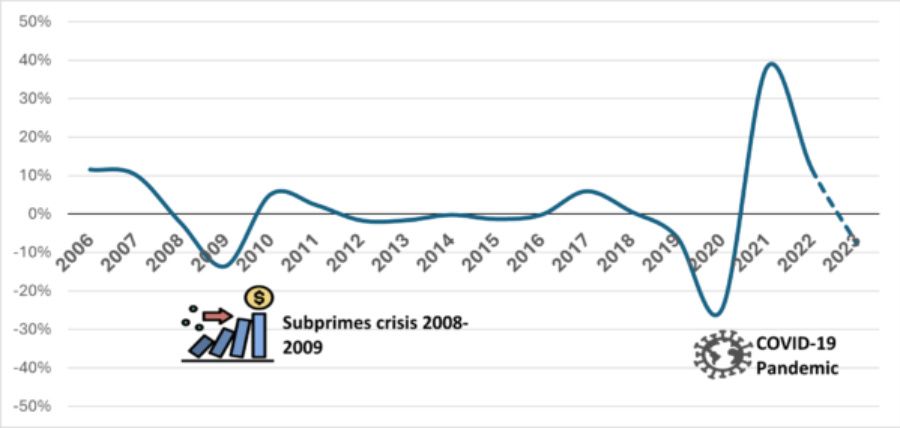Is 2023 the new reference year for Business aviation?
After the Covid boost, Business aviation traffic levels seem to return to a new normal following the ups and downs of the economic cycle.
Following 2021 and 2022, 2 special years for the European Business aviation, it proves intriguing to juxtapose that exceptional scenario with the unfolding narrative of 2023. While the year is still in progress, the cumulative data from each month indicates a discernible trend, potentially reflecting a more conventional level of activity for the industry.
Business aviation trends in 2023
Starting from January 1, 2023, Business aviation activity has consistently stabilized at approximately 8% below its levels from the previous year. This decline translates to an average of 160 fewer daily flights compared to those in 2022.
Varied impact across aircraft sizes and mission types
The decrease in the number of flights in 2023 is evident across various aircraft sizes and mission types. This pattern is noticeable at major European airports for Business aviation, except for the top two Italian airports (Milano Linate and Roma Ciampino), where activity remains comparable to 2022. This seemingly steady performance may stem from these two airports having lower-than-average performance in 2022 compared to the European average.
Shifts in inter-continental connections
Concerning inter-continental connections, it’s worth noting that flights to North America reflect the European trend by performing less well in 2023 compared to 2022. However, connections to Asia and Africa have seen an increase.
How Business aviationactivity levels compare to the airline industry
In the airline industry, it is worth noting that by 2023, it has nearly returned to normal levels. Business aviation now accounts for 7% of European flights once again, a proportion that has historically been stable across decades for industry within the European skies, predating the Covid era.
Historical context and future projections
Examining the history of Business aviation and its response to global economic crises, it appears likely that the industry will follow a similar trajectory as seen after the sub-prime crisis in 2008-2009. This implies a ‘wave effect,’ where after a few robust years, it will gradually subside within a few years. This scenario is in line with the role that Business aviation has always had within the global ecosystem as its level of activity will directly mirror the changing economic cycles.




